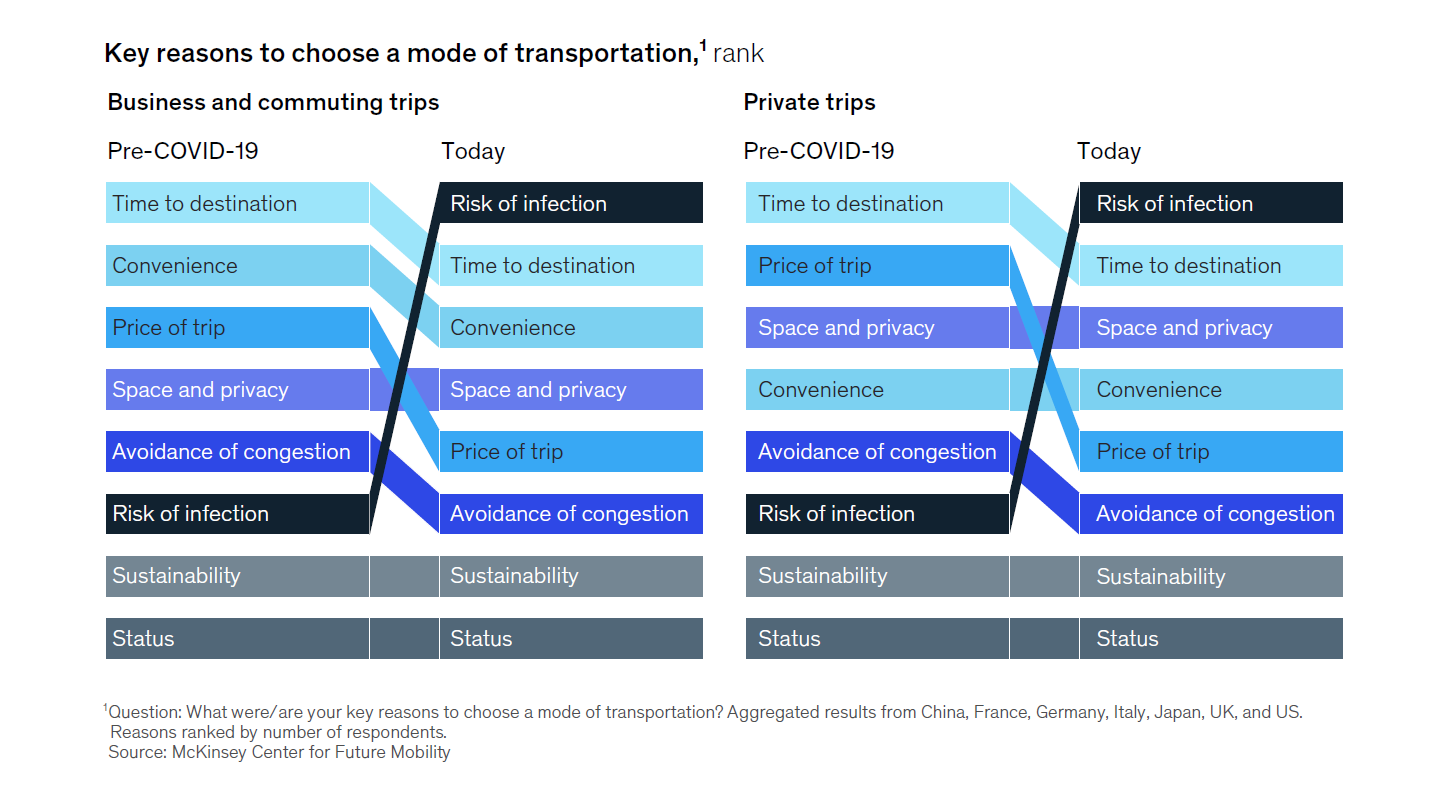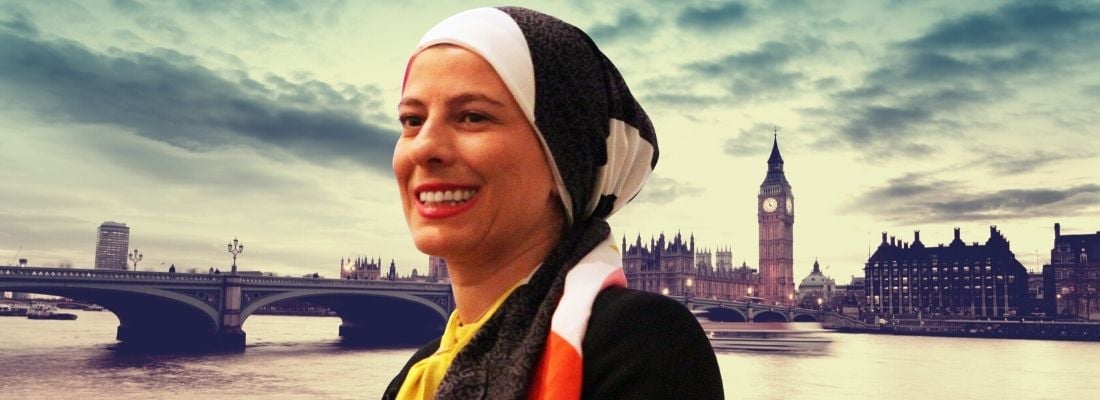Speeding up the mobility transition: Zeina Nazer
“We need to look beyond disruptions to see how we can benefit from transport innovation.”
With the continuous growth of the population and ongoing urbanization there are numerous mobility challenges. Sustainability, safety and societal impact are amongst our daily concerns. We need to speed up the mobility transition to keep up with the fast changing global dynamics, which requires inventive approaches and better solutions. In this series we share inspiring and innovative cases from all over the world. Zeina Nazer is a Smart Mobility Expert and Co-Founder of CITIES FORUM. She has been in the transport technology industry for 25 years working to explore strategies for building more resilient, efficient, and sustainable transport. How does she speed up the mobility transition?
Zeina Nazer is Co-Founder of CITIES FORUM, Doctoral Researcher at the University of Southampton, Vice Chair of ITS UK User Behaviour Forum, and Secretary General of ITS Arab. Zeina has global experience in strategy, innovation, consulting, and research in firms such as KPMG, Parsons and AECOM and a leading Advisor for governments. Zeina is passionate about transport technology and innovation for a good cause, to save and improve lives.
“Transport technology and innovation should save and improve lives. Otherwise it’s useless.”
‘Otherwise it is just a trend that is useless. The pandemic has made the cities and government authorities to constantly make mobility decisions. As consumer behaviour has shifted during the course of the pandemic, decision makers have increasingly put cities at the centre of the discussions, affecting the design of car lanes, pedestrian walkways, and the EV charging infrastructure. The developments in personal mobility are now defined around four disruptions: autonomous driving, connected cars, electrified vehicles, and shared mobility. However, since the global pandemic has major implications on consumer behaviour, policy making, and regional trends, automotive and mobility, players need to look beyond those disruptions to consider what will be the new normal. And so do I.’
‘I am currently doing my PhD on LiDAR Technologies and Innovation to improve Road Safety. LiDAR (Light Detection and Ranging) is a remote sensing method for determining ranges by targeting an object with a laser and measuring the time for the reflected light to return to the receiver. We will witness a wide use of LiDAR post pandemic. Besides Autonomous Vehicles, LiDAR is being implemented for social distancing. Currently, LiDAR is deployed in I-Phones for indoor mapping and photography using VCSELs (Vertical Cavity Surface Emitting Lasers) and SPADs (Single Photon Avalanche Photodiodes). Soon Apple will join the industry leaders and implement LiDAR for I-CAR.’
‘The cost of placing a single LIDAR device on a car used to be $15,000. With the economy of scale, this cost is planned to go down to $150 per unit. The technology development of LiDAR is moving in a very impressive way from a styling, performance, size and cost perspective. We need to extend the performance and reliability of LiDAR architecture into automotive applications like L3 (conditional automation) and L4 (full automation in a prescribed operational domain).’
“I do not see fully autonomous personal vehicles happening soon.”
‘I do think we will first and maybe even only see autonomous vehicles applied in public transport. To be honest, I do not see fully autonomous personal vehicles happening in the near future. There is so much money being spend on it but connected means you need infrastructure. On highways maybe, but not in urban areas, I do not see how it is reasonable for the near future.’
Smart city trends for 2021 according to Zeina Nazer
- Climate Change / Decarbonisation/ Zero Carbon Cities and COP26
- The Pandemic Aftermath, the 15-minute cities and Active Travel
- Electric and Shared Vehicles in line with Net Zero and climate change
- More use of LiDAR combined with other sensors to improve road safety
- Artificial Intelligence used to close the gender data gap for an equitable future
- Micromobility – E-scooters to attract car users rather than pedestrians.
- Mobility as a Service (MaaS) deployments incorporating traffic data.
- Connected Vehicles & Autonomous Driving
“I am in love with 15-minute cities”
‘Another trend that will improve our lives is active travel. I am in love with the 15-minute city! Cities like Paris, Barcelona, Melbourne, New York, and Copenhagen where residents have easy access to school, work or groceries within a 15-minute walk and cycle. I changed my behaviour as well. Before COVID-19 I would call an Uber for a 7-10 minute drive. Now I trust myself walking. Thanks to the pandemic I had to. It’s only a 20 minute walk and I’m sure I will make it in time. An Uber can easily arrive late or get stuck in traffic. Based on a survey of consumer- car-buying behaviour during the pandemic, nearly 70% of mobility users in the US, UK, Germany, France, Italy, Japan, and China said they would choose to walk or cycle at least weekly even after returning to normal life. Active mobility to me is the future.’

Image: Key reasons to choose a mode of transport. Source: McKinsey Center for Future Mobility, 2020
‘If anything, we should learn of being empathic and kind for people around us. The pandemic showed us active and stronger communities. This goes in line with London Mayor Transport strategy to use the healthy streets approach, making health and personal experience the priority of planning cities. According to Transport for London, streets make up 80% of London's public spaces - making them Healthy Streets will improve the quality of life. Public transport is the most efficient way for people to travel distances that are too long to walk or cycle and forms an attractive alternative to using the car.’
‘Streets should be designed to welcome more people and less cars.’
‘We need to make streets healthier, more inclusive, and more attractive for people to have a seat, talk to each other and feel free and safe. Streets are more welcoming people, and less welcoming cars.’ London and TfL are doing a good job, including the elderly and disabled in their city and infrastructure planning.’
‘In Singapore people are passionate about their city. The government makes people happy. You can see that. But also, the multimodal transport in Amsterdam, Copenhagen and Vienna are so well organised and in a simple way. It is in their culture. I remember one time, I was crossing a cyclist lane in Copenhagen and the cyclists were so annoyed. I didn’t get that. Later I did: there is this culture of cyclists first. It’s embedded in their blood and the government has done a lot of work to make it part of their education. I am very inspired by clean tidy cities where cars are not governing the roads.’
‘I sometimes get the sense that cities want to be the smartest and maybe to show off. However, to me the idea of technology is to make streets safer, smarter and most of all improve our lives. You cannot implement technology and spend people’s money on technology that is not helping residents; we need to provide resilient and fair solutions for everyone.’
“Cities should incentivize public transportation use and active travel particularly among college students to motivates people to get rid of their own car.”
Cities like Luxembourg and Boston have implemented free bus rides and I would love to see this in UK cities as well. I hope to do a study and convince government that subsidising public transport motivates people to get rid of their own car. It will be very challenging, but I really look forward to see this as one of the solutions by offering a good alternative. In the long term, this could be the sustainable and fair solution.’
‘At the University of Southampton we have created a group called “Close the Data Gap Gender Equity” on closing the gender data gap in transport data. Especially during this pandemic, but already before that, we have seen a lot of unfairness when it comes to transport design and planning. Women, but also low incomes are neglected. The CTDG group is about improving transport access for everyone: all genders, all incomes etc. We are closing the data gap.’
“We have to make sure by adding more modes like e-scooters we are not creating more congestion.”
‘Another challenge we have is reducing CO2-emissions. Trends such as micromobility and shared vehicles are very important in the next years. But again, we have to figure out a financial model to let people give up their own private car and no longer see it as an identity, but more like a commodity. Understanding the motivation is very important to make sure more modes does not mean more congestion. This depends on who you attract. For example, the e-scooter. If we have attracted people using e-scooters who walked or cycled before, we did not do a good job. If we attract people who used to travel by car and now use the e-scooter; we have done a good job. So we need to target the right people and be smart.‘
‘If anything, good has come out of it, the pandemic has improved traffic. We cannot live without moving people and moving goods. However, traffic has improved, air quality has improved, home delivery has increased. With the enforcement of government during this pandemic we trained people to drive less. So, in an educational or nurturing way, we can continue this! Of course, there is an economic effect and budgets are being revised, but let’s take this as a chance to reprioritise. Do we really care to be the smartest or do we prefer healthier and safer cities for residents?’
‘Something else that really inspired me is Sweden and Vision Zero. There is no reason for people to die on the road. Every traffic accident is avoidable. The Vision Zero concept means you can avoid it by taking the right measures, training traffic partakers from pedestrians to vehicle drivers.’
“At the end of the day this is all done for people.”
‘What energises me is using technologies in transport to save and improve lives. If I am able to save lives with technology, I have done my job. I enjoy making lives easier with fair costs, healthy air and inclusivity, but saving lives is the most important thing. At the end of the day this is all done for people.’
Share your story
Do you have an innovation, research results or an other interesting topic you would like to share with the professionals in the infrastructure, traffic management, safety, smart mobility and parking industry? The Intertraffic website and social media channels are a great platform to showcase your stories!
Please contact our Sr Brand Marketing Manager Carola Jansen-Young.
Are you an Intertraffic exhibitor?
Make sure you add your latest press releases to your Company Profile in the Exhibitor Portal for free exposure.





